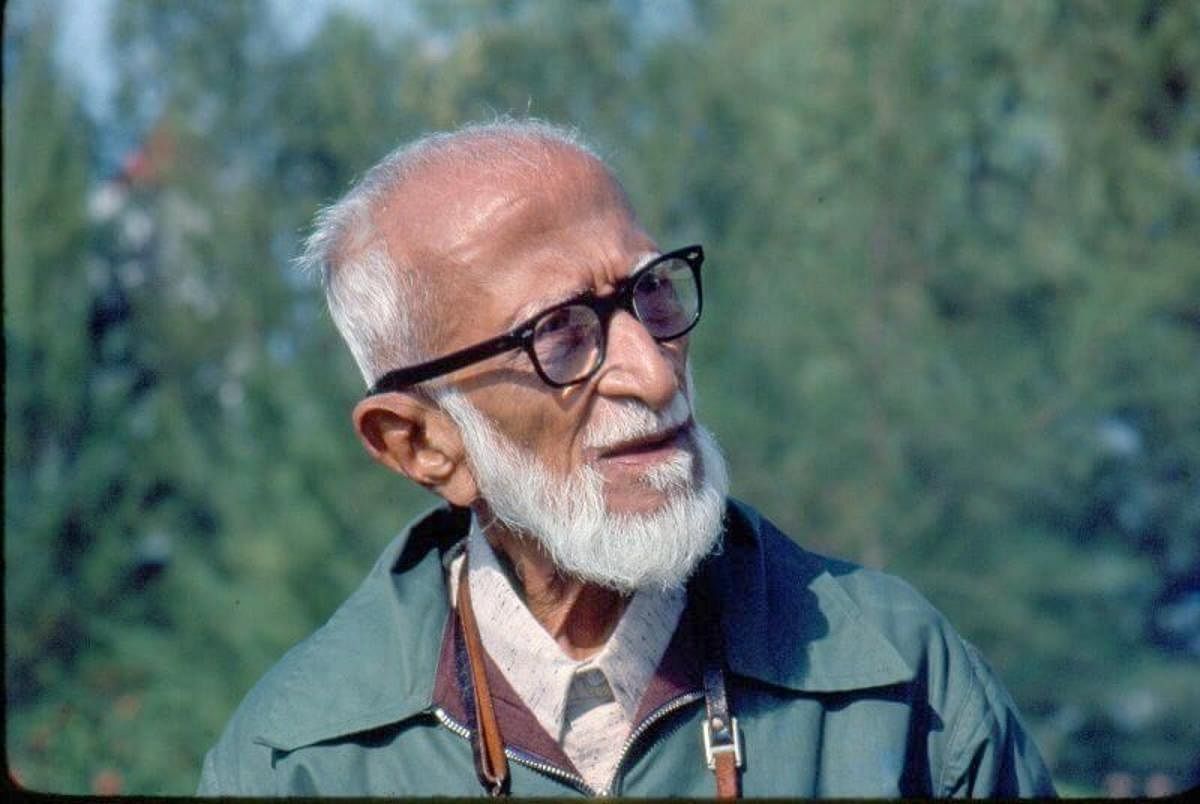
For one who has been writing on the issue of house sparrow protection, and also collecting
books, pictures and postage stamps related to the subject, it was natural to reach for The Fall of a Sparrow, the autobiography of the legendary ornithologist and naturalist Salim Ali. It is a treasure trove of a book — a delightful treat for lovers of birds and literature alike.
And what of the sparrow in the book? Salim Ali speaks of the time when he was a boy of nine or ten, when a colony of house sparrows “used to be in permanent residence in the stable” of his Khetwadi home in Bombay. The very first bird note he made was during this period on the house sparrow: each time he shot a cock house sparrow that sat on guard outside the nest that had the female sparrow sitting on the eggs, “the female seemed to have another male in waiting who immediately stepped into the gap of the deceased husband.” Of the bird note, he writes: “I am rather proud of this note, because though intended as a record of my prowess as a hunter and made long before I was conscious of any possible relevance, it has proved more meaningful in the light of present-day behavioural studies.” The house sparrow was in abundance in spaces of human habitation back then, and the bird had kindled an interest in Salim Ali in bird-watching and ornithology.
Literary skills
The youngest of nine children, Salim Moizuddin Abdul Ali (12 November 1896 — 20 June 1987) was orphaned at the age of three, and was raised by his maternal uncle. It was in 1908, when Salim Ali needed to identify a bird he had shot, that he approached the Bombay Natural History Society (BNHS), an organisation that he would go on to become the president of. That bird then was a yellow-throated sparrow. It was then that he began reading books on natural history and birds, and also engaging, at the BNHS, in skinning, stuffing, preparing and labeling bird and mammal species for a study collection. As a youngster, Salim Ali was also an avid bird egg collector.
Like Jim Corbett, Salim Ali too started off as a hunter, shooting sparrows, partridges, ducks and quails, as a young boy, for the home kitchen. Not any big game. Later, he used to collect specimens of birds of various species for scientific study and research. And like Corbett, Salim Ali was a conservationist through and through.
The Fall of a Sparrow (1985) shows Salim Ali’s extraordinary literary skills. There are memories and recollections of a great many events, all peppered with wit and humour, and in a style that makes for a captivating read. He reveals though that it was a surprise for him that, despite his not-so-great academic accomplishments, a story of his became part of a published anthology.
A little bit of everything
The Fall of a Sparrow has a little bit of everything — politics, society, history, geography, economics, education and adventure, besides, of course, nature, environment and birds. There is a great deal of interesting trivia about Salim Ali’s life. He writes, for instance, about the freedom fighter Sarojini Naidu who would visit him and his wife, Tehmina, at their home, and read out a literary piece for them. He describes the life of his elder brother, Hamid, who was in the Indian Civil Service, and who was generous to a fault.
Salim Ali was a keen bird watcher when such an activity was hardly followed in India. He trained in ornithology in Berlin with Prof Erwin Stresemann in the Zoological Museum of Berlin University in 1929-1930. Salim Ali was professionally associated with the BNHS lifelong, and he documented the birds of the Indian subcontinent in a number of books. The monumental Handbook of the Birds of India and Pakistan — 10 volumes — was co-authored by Salim Ali and the American ornithologist, Sidney Dillon Ripley. Besides the Padma Bhushan, Padma Vibhushan and National Award (gold medal) for wildlife conservation, Ali received many an international award. A pair of stamps was issued by India Post in his honour to commemorate his birth centenary. The stamps feature the ornithologist, as also storks and chicks in the Keoladeo National Park, a Park he had played a significant role in protecting and developing.
The Salim Ali fruit bat (Latidens salimalii), Salim Ali’s swift (Apus salimalii) and Himalayan forest thrush (Zoothera salimalii) are species named after the ‘birdman of India’.